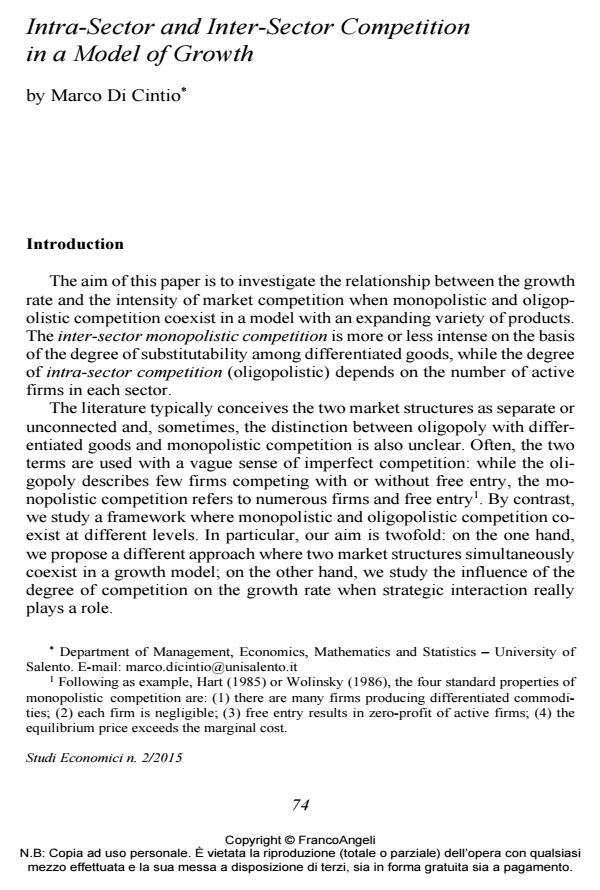Intra-Sector and Inter-Sector Competition in a Model of Growth
Titolo Rivista STUDI ECONOMICI
Autori/Curatori Marco Di Cintio
Anno di pubblicazione 2016 Fascicolo 2015/116
Lingua Inglese Numero pagine 16 P. 74-89 Dimensione file 312 KB
DOI 10.3280/STE2015-116003
Il DOI è il codice a barre della proprietà intellettuale: per saperne di più
clicca qui
Qui sotto puoi vedere in anteprima la prima pagina di questo articolo.
Se questo articolo ti interessa, lo puoi acquistare (e scaricare in formato pdf) seguendo le facili indicazioni per acquistare il download credit. Acquista Download Credits per scaricare questo Articolo in formato PDF

FrancoAngeli è membro della Publishers International Linking Association, Inc (PILA)associazione indipendente e non profit per facilitare (attraverso i servizi tecnologici implementati da CrossRef.org) l’accesso degli studiosi ai contenuti digitali nelle pubblicazioni professionali e scientifiche
The role of patents is threefold: first, they are important to state the property rights of an invention; second, they are necessary to secure financing for starting a new venture; third, they are fundamental to recoup R&D investments. Noting the imperfections of the patent legal system, the market has two potential levels of competition under different structures: the inter-sector monopolistic competition and the intra-sector Cournot oligopoly. Considering the sectorial market share as the indicator of patent system enforcement, the author finds that growth takes place, if and only if, there are some property rights of private knowledge produced by R&D activities. In turn, the enforcement of patent system translates into a low degree of competition among firms. Its influence on the growth rate goes in a single unambiguous direction. As competition rises, few resources are available for R&D, so the growth rate goes down.
Parole chiave:Product Differentiation; Endogenous Growth; R&D; Market Structure; Oligopoly; Monopolistic Competition.
Jel codes:E10; L13; L16; O31; O40.
Marco Di Cintio, Intra-Sector and Inter-Sector Competition in a Model of Growth in "STUDI ECONOMICI " 116/2015, pp 74-89, DOI: 10.3280/STE2015-116003